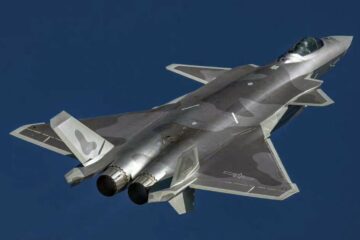Last Updated on 04/05/2022 by AIR OPERATIONS
This new note is dependent on external contents that we believe are worthy of mention. Each Recenseo (Review) will cover 6-8 topics: OEMs, Supply Chain, Commercial Markets, Defense Markets, Economy, Geopolitics and Technology. All content is external and as such is not covered under AIR Privacy policy (we have to say it otherwise a man with a red stapler in a basement office in Brussels might get mad at us).
Economics
Wholly appropriate piece (Nov 2021) from the highly respected Bruegel think tank (in Anderlecht, Belgium, not the Brussels microcosm, to paraphrase a famed French economist)
Is the risk of stagflation real?
Most economic forecasts predict a return, in the medium-term, to pre-pandemic growth and inflation. Nevertheless, the European Central Bank and fiscal authorities need to be vigilant for signs of the contrary.
Stagflation worry seems to be the new fashion in Europe and other advanced economies, as the experience of the 1970s supply-side shocks, which raised inflation and lowered growth, is actively revisited. In a recent press conference, European Central Bank President Christine Lagarde had to reassure listeners that stagflation was unlikely.
Aircraft OEMs
We turn our attention to UAC and Russia in this note from Aviatsiya Rossii (Russian Aviation). While the MC-21 market potential has never been significant, we are interested in the comments from Yury Slyusar, President and Chairman of UAC about the work conducted on the aircraft to transfer ATA packages to Russian suppliers.
Prior to the start of the special operation in Ukraine and the cessation of deliveries of foreign aviation equipment to Russia, UAC had planned to supply domestic carriers with 80 to 100 domestic aircraft per year, and as stated in early April in an interview with the Russia-24 TV channel, the head of the corporation Yuri Slyusar, these plans have not changed.
This year, two MS-21 aircraft with PW1400G engines and wing produced by PKM were to be transferred to Rossiya Airlines. However, according to Slyusar, “this does not make much economic sense, insofar as it will not be very cost-effective to commercially operate two aircraft in this” condition “”. Aircraft in this configuration will instead be transferred to airline operational evaluation for training and evaluation by crews, generating data and identifying teething problems
Continue reading at Aviatsiya Rossii (по-русски)or in here in English
Supply Chain
Aviation Week has a confirmatory piece about the current and persisting risks within the aerospace supply chain in the wake of MRO Americas
The commercial aerospace supply chain are re-examining everything from how they forecast demand to what they can handle in-house as part of broad efforts to mitigate increasing risk as passenger airline activity ramps up.
Speakers on multiple MRO Americas panels here made clear that supply chain stability is emerging as the most significant threat to a steady recovery.
The issues are broad. Labor shortages and parts availability, both of which were emerging even before the downturn, are back, with the pandemic and global geopolitics re-shaping them some.
Geopolitics
As we remember the Falklands war 40 years ago, this piece from The Spectator supports the increasing level of influence of the PRC in international affairs. The article qualifies China strategy of “creating blocs opposing international law and norms”. While we do not necessarily support the tone of the article, it has the merits of highlighting a not-so unexpected evolutionary pattern from a world economic and political power. To connect the dots, this approach will likely spill into commercial aviation when “time and circumstances are right”
Russia’s brutal invasion of Ukraine has paradoxically heightened China’s global reputation, if only because it has not yet invaded a weaker neighbour. Yet China remains a far greater threat over the long run than Russia. And recent disruptive behaviour by Xi Jinping should remind London, Washington and their allies that Beijing poses not merely a regional threat, but a global one.
Though overlooked in the wake of Russia’s devastation of Ukraine, Beijing has flagrantly interfered in Britain’s national interests by proclaiming support for Argentina’s claims to the Falkland Islands.
China’s timing was particularly provocative, given that 2022 marks the 40th anniversary of the Falklands war. Britain’s success in that conflict helped buttress international law and self-determination in the face of territorial revanchism by aggressive, authoritarian powers. But Beijing is well practiced in undermining these global legal norms, as proved by its dismissal of a Hague ruling against China’s expansive claims throughout the South China Sea.
Technology
Well, one of our most trusted source for technology information has a one on one with the African of the moment, Elon Musk. Much of the attention that Mr. Musk has received lately is about his intended purchase of a toxic social media outlet; nevertheless, this interview from TED is why we believe he is one of the most fascinating business leader to emerge since Henry Ford. Mr. Musk, if you read this, can you please build a transformational 220-250 passenger aircraft by 2030?
Teslabot – Optimus- will sell for less than a car.
Three years that Elon Musk spent living at the Tesla factory during the Model 3 launch made him understand every part in the car and how it is made. Elon Musk says he could be the most knowledgeable person about manufacturing living at this time.
Elon indicated that Tesla did have secure funding to go private before and the SEC was shown the evidence. The SEC chose to charge them anyway. Elon was forced by his bankers to cooperate with the SEC.
Commercial Aviation
The results are in and Airbus has confirmed a significant market share capture with Qantas in Australia. 12 A350-1000, together with 40 new A220-300s and A321XLRs. Qantas has included purchase options for another 94 aircraft. This is significant because it speaks to the strength of the Airbus product portfolio but also because it is perhaps to be distantly interpreted as a “sorry” package towards France for the “AUKUS” submarine reversal. Meh…probably not. Also, 19 to 20 hours in a tube? No thanks; we prefer to spend a night in Singapore if needed…
Qantas has confirmed a new order with Airbus that will introduce 12 A350-1000 Project Sunrise aircraft into its fleet, along with 40 new A220-300s and A321XLRs that will replace aging 737 and 717 aircraft currently being operated by the Australian airline.
The A350s will be capable of flying nonstop routes from Australia to any other city, including New York and London, and are the result of a research initiative Qantas participated in for several years evaluating the Boeing 787-9 and Airbus A350-1000 to operate what will become the longest nonstop routes ever operated by Qantas. Some of the primary routes Qantas evaluated the A350-1000 on include Brisbane to Paris, Melbourne to New York, and Sydney to London.
On the domestic side of its operations, a combined 95 total Boeing 737 and 717 aircraft will be retired and replaced by the incoming orders for the new A321XLRs and A220-300s, which Airbus will start to deliver late next year.
Defense
J-20 and Y-20s are symbolic of a more assertive PLAAF. While the Y-20s in service are nearing 50, the version equipped with the WS-20 engine is still going through flight testing in Xi’an. The Y-20 is giving China a true global strategic airlift capability, as demonstrated by the recent delivery of FK-3 (export version of HQ-22) SAM systems to Serbia by 6 Y-20s. J-20s capabilities are equally being expanded, while the article is right in the sense that the aircraft is not a “true” multirole yet, it will have capabilities extending beyond its intended interceptor role. Precision weapons, anti ship, nuclear delivery and drone swarm control are some of the missions we can expect from a design that appears to mature “well”,
China’s military has rapidly built one of the world’s largest aviation forces, developing increasingly capable aircraft that the US Defense Department has warned are “gradually eroding” the US military’s advantage in the air.
In recent weeks, China’s premier fighter jets and strategically valuable airlifters have reached milestones that underscore Beijing’s increasing focus on and investment in military aviation.
In early April, six Y-20 cargo planes arrived in Belgrade to deliver what were believed to be Chinese-made HQ-22 surface-to-air missiles to Serbia’s military. The roughly 5,000-mile flight by what Chinese state media called “a record-breaking number” of Y-20s was seen as a demonstration of Beijing’s ambitions for global power projection.
Days later, a top official with the Aviation Industry Corporation of China, the state-owned firm developing the J-20 fighter jet, said that J-20s are now conducting regular patrols over the East and South China seas, a sign of the advanced jet’s increasing reliability.



